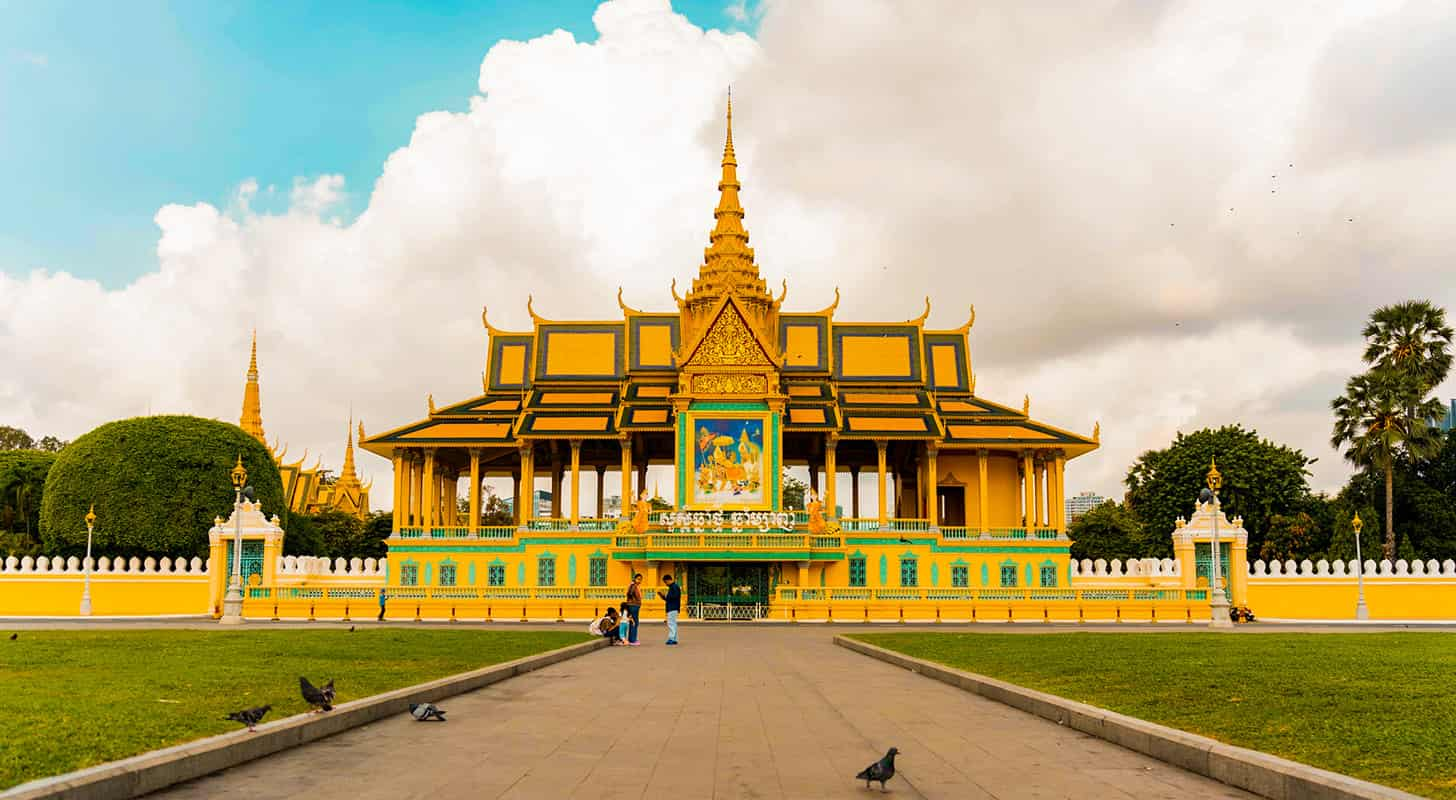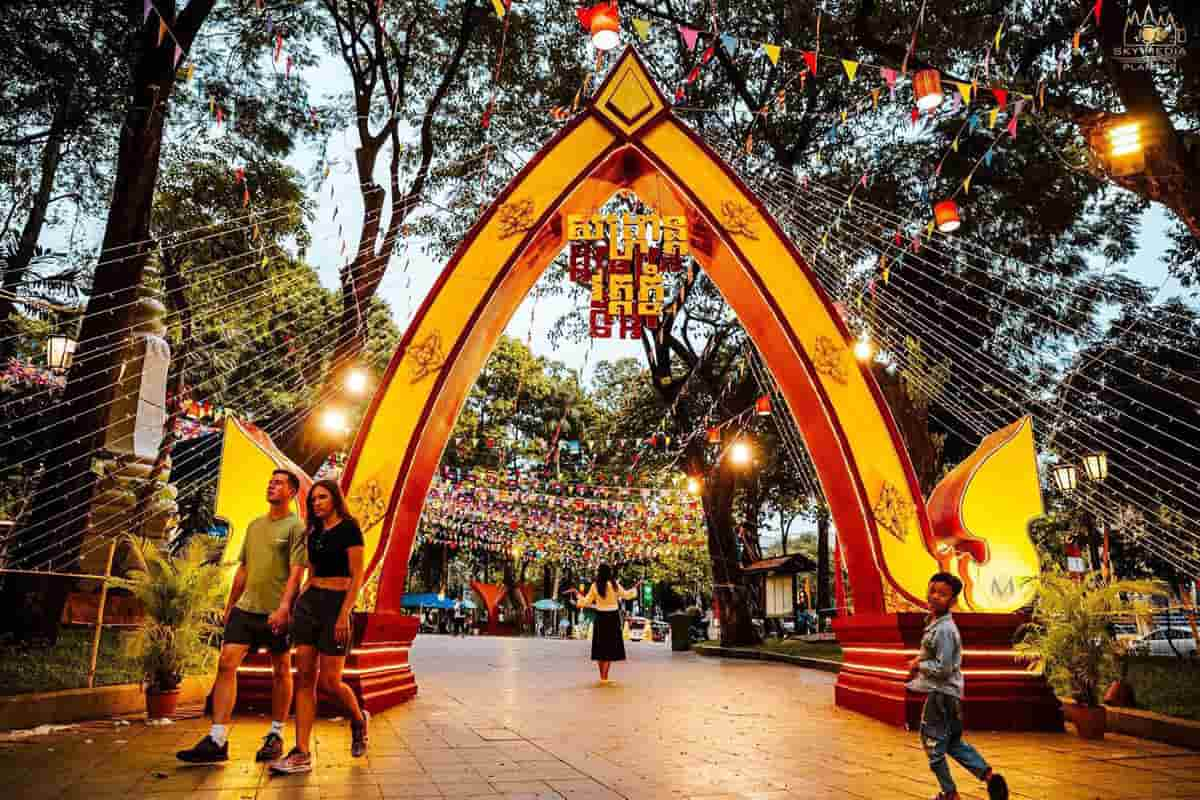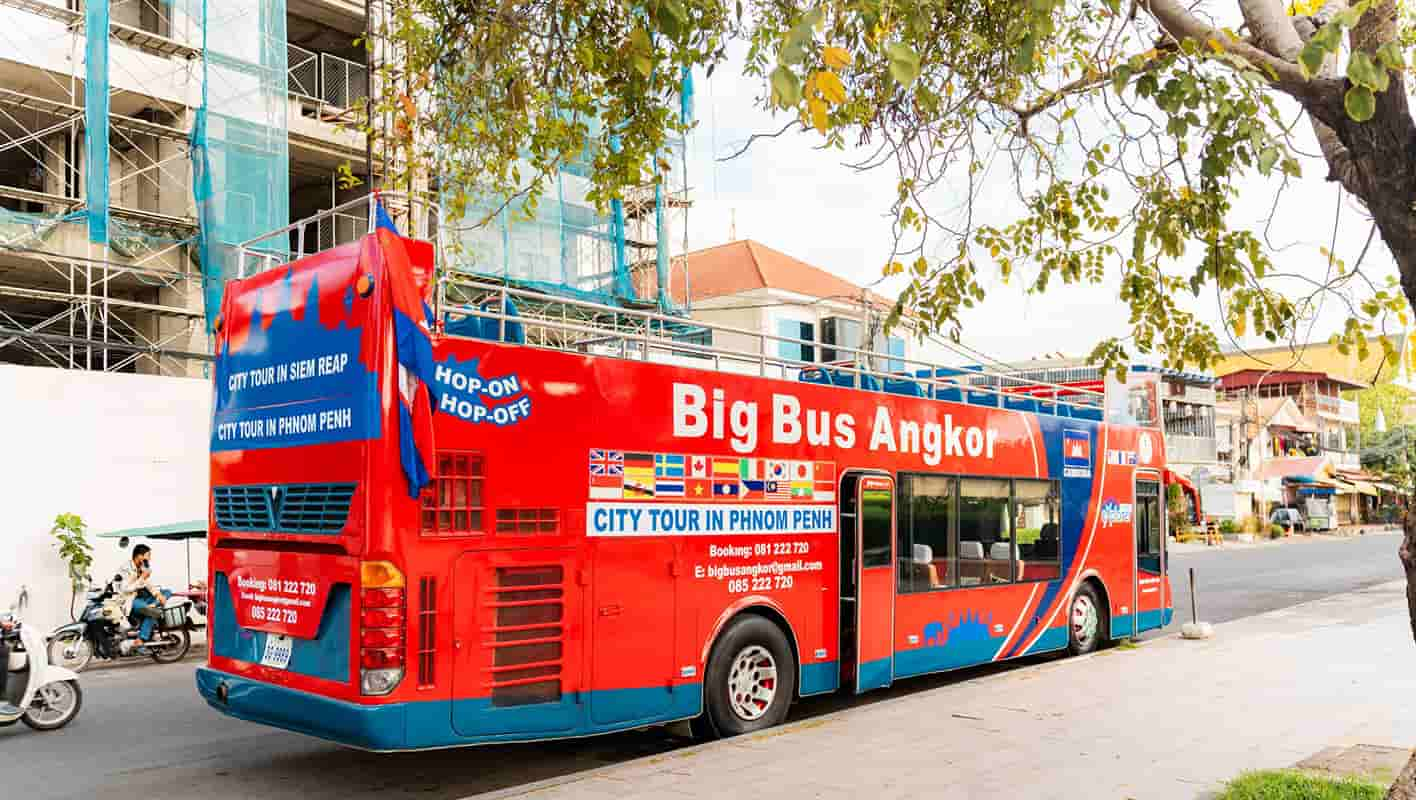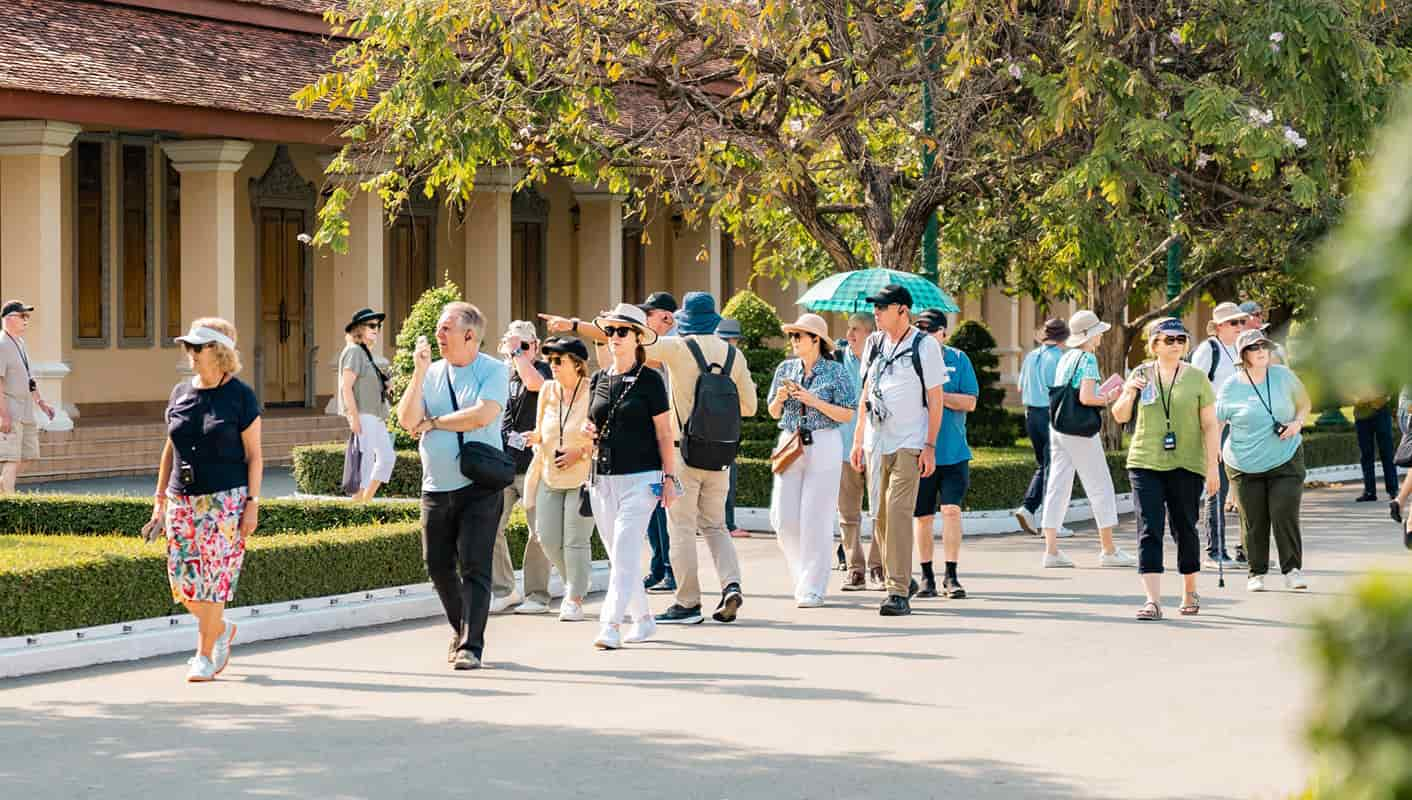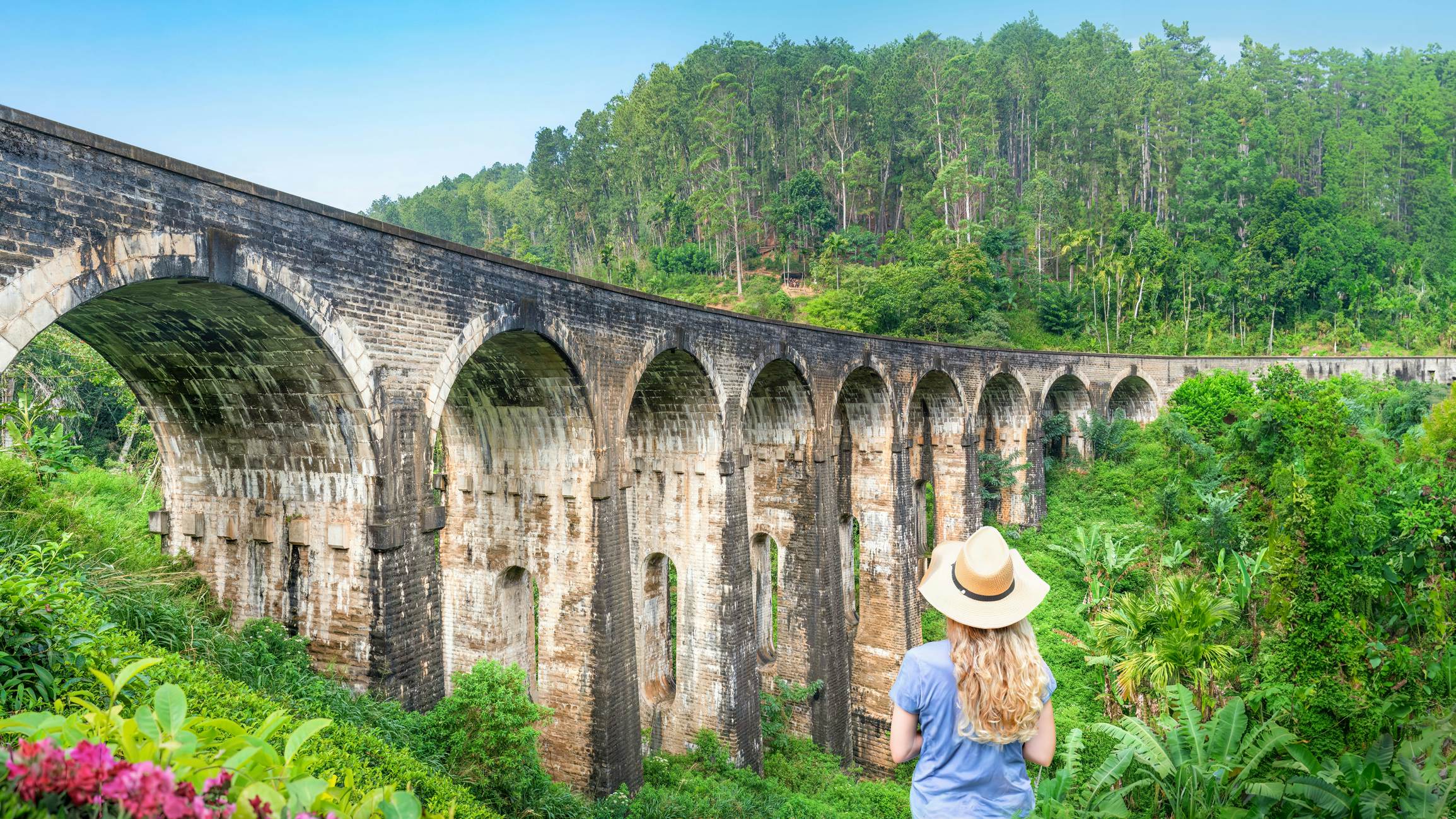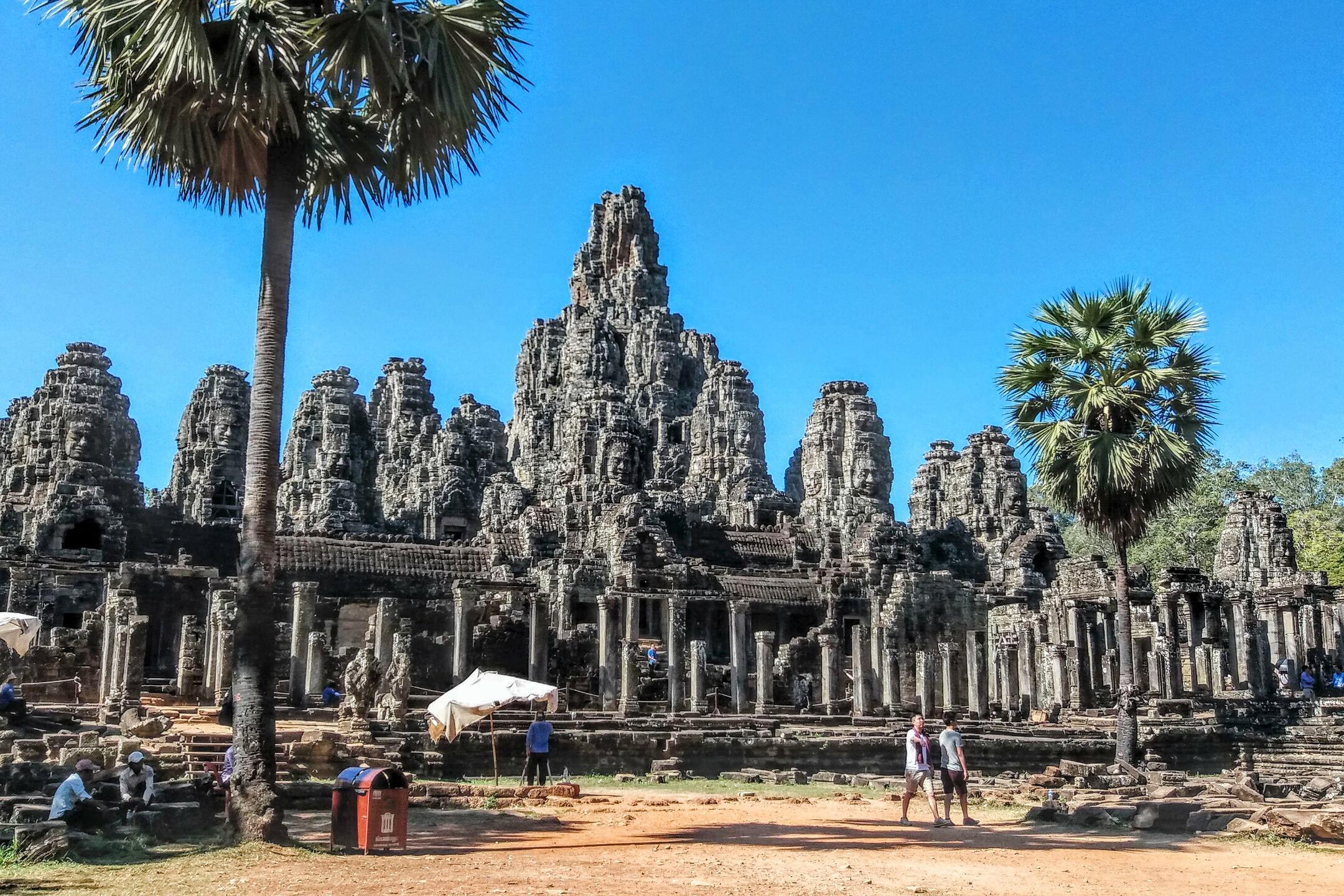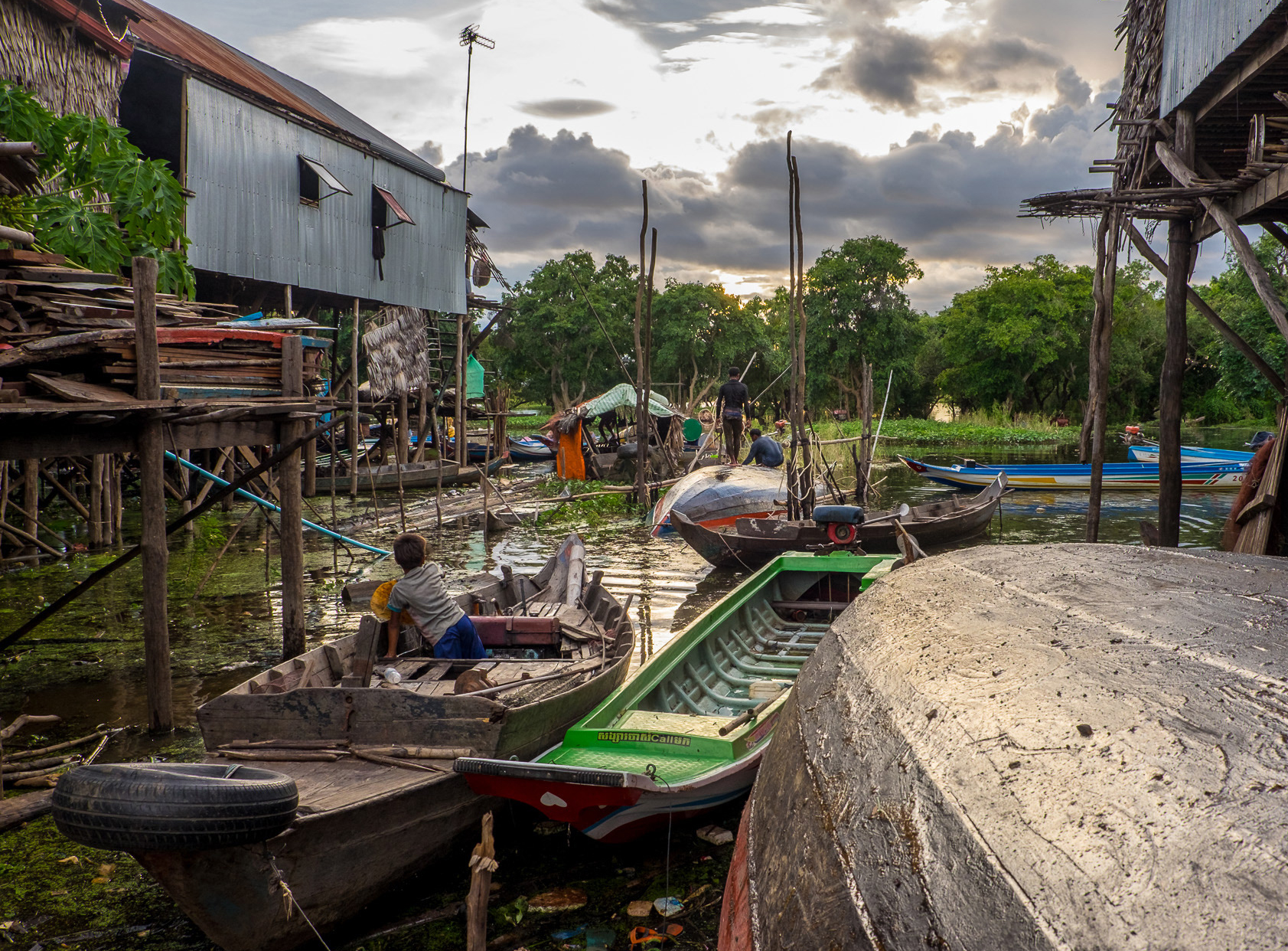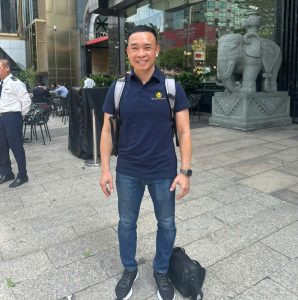Phnom Penh
In Phnom Penh, hop onto the back of a gleaming Vespa for a short ride to Vattanac Capital Tower. From its glass-walled sky bar, you’ll drink in sweeping views of 14th-century pagodas, tiered French-colonial rooftops, and the gleaming new skyscrapers that mark the city’s ascent.
Delve into Phnom Penh’s architectural tapestry on a guided walking tour. Meander down frangipani-lined boulevards to the bold New Khmer Institute of Foreign Languages, then admire the Art Deco grandeur of Central Market-often mistaken for a modern temple-and the faded yellow French mansions that Charlie Chaplin once likened to the “little sisters” of the Champs-Élysées.
Next, explore the Royal Palace, whose gilded roofs dominate the riverfront skyline. Tour the three-spired Throne Hall and its elegant pavilions, then step into the Silver Pagoda to marvel at a near-life-size Buddha studded with nearly 10,000 diamonds. Adjacent, the National Museum houses the world’s finest collection of Khmer sculpture, tracing a millennium of artistry from pre-Angkorian stone carvings to intricate bronze bas-reliefs.
As dusk falls, feel Phnom Penh’s youthful energy on a Vespa food tour-sampling Khmer-inspired dishes in hidden cocktail bars and family-run eateries before ending the night in one of Bassac Lane’s intimate jazz clubs. Beer enthusiasts can also join a craft-brew tour to taste locally produced ales like Hops Beer, made under a 500-year-old German purity law using only water, barley, and hops.
For a deeper perspective, visit Tuol Sleng (S-21) and the nearby Killing Fields of Choeung Ek with an experienced guide. At Tuol Sleng, the former high school turned prison, you’ll see haunting cellblocks and the black-and-white prisoner portraits. At Choeung Ek, the mass graves stand as a solemn memorial to the thousands who perished.
Best time to visit Phnom Penh: While Phnom Penh is inviting year-round, the period between November and March delivers the driest, most pleasant weather for exploring its rich history, lively culture, and mouthwatering cuisine.
Speak to someone who's been there

Cambodia ⟩ Temples of Angkor
Cambodia ⟩ Sihanoukville
Cambodia ⟩ Siem Reap
Cambodia ⟩ Sen Monorom
Cambodia ⟩ Ratanakiri
Cambodia ⟩ Preah Vihear
Cambodia ⟩ Mondulkiri
Cambodia ⟩ Kratie
Cambodia ⟩ Koh Kong
Cambodia ⟩ Kep
Cambodia ⟩ Kampot
Cambodia ⟩ Battambang
Ideas for how to explore Cambodia
Our Cambodia travel guides combine specialist passion and firsthand insights, revealing hidden gems, top-quality guides, hotels, authentic restaurants, and unique transport experiences for unforgettable journeys.



